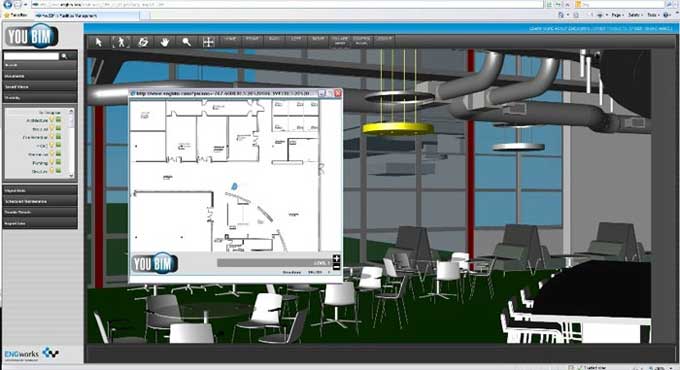The Role of BIM in Facilities Management
Tweet
What do you mean by Facility Management?
Once the building has been constructed and handed over, facility management begins. Throughout the lifecycle of a building, it is a continuous process. As part of this process, the asset and its content equipment, space, furnishings, etc are managed optimally. Facilities management involves all the activities that integrate business administration, asset management, maintenance, contract management, renovations, and refurbishments.
BIM in Facility Management
Both buildings and the technology used to control them are becoming smarter. Building Information Modeling is one of the most popular technologies that organisations may use today (BIM). It helps with the process of extracting measurable information from physical settings is the next stage in the digitalization of facilities.
Building Information Modeling (BIM) allows professionals to refer to and use a central database for maintaining the life of the building. With BIM, a complete database is provided of the structure, plumbing structure, floor plan, space requirements, furnishings, equipment, electrical, etc. In every small detail with regard to its service period, manuals, replacement period, etc.
The detailed guide at this level helps managers achieve operational efficiency at the lowest possible cost.
Functions of BIM in Facility management
Efficient usage of Energy
In addition to having a negative impact on the environment, efficient energy use has a high operating cost as well. In building construction, energy efficiency is of great importance. Facility managers and owners can use BIM to analyze costs and compare alternative options in order to reduce the cost of energy by adopting the most feasible and environmentally friendly option.
Continuous monitoring of the building's performance over time and other factors, such as comfort, water consumption, electricity consumption, etc., can also be carried out, allowing alternative proposals to be implemented if needed. Information provided by BIM helps formulate the best energy consumption strategy at the lowest cost.
Manages lifecycles more effectively
The building element's lifetime data is extremely important since it is necessary to predict when it needs to be replaced and how much capital upgrade will cost. The facility manager or owner can use BIM models to analyse the advantages of investing in materials and systems that may have a one-time cost but have a long-lasting effect that gives better payback over the lifecycle of the building by including building design data, such as life expectancy and replacement cost.
A contractor and owner understand the replacement cost and life expectancy of the materials that they will invest in, which allows them to make an informed decision and avoid any unnecessary overhead expenses.
Helps in the management of Assets
Facility professionals can reduce real estate costs by understanding assets, floor plans, space requirements, etc., in order to minimize space wastage while reducing space wastage. BIM provides information about floor area and rooms that are used to manage space.
This process is made easier by the use of BIM, which provides a comprehensive view of existing space utilization. By utilizing the space optimally, the facility professional can plan, track, analyze, and control the space. Thus, the performance of the building is maximized.
Performing renovations and reconstructions
The building's as-built BIM model serves as a resource and the foundation for any future planning of retrofits, renovations, or refurbishments. The facility managers and owners can make better decisions thanks to BIM because they are well aware of the building's current state. This reduces the effects on costs and simplifies the procedure.
BIM has comprehensive data on each component of the structure. Offering such thorough and precise data lowers the cost and complexity of building rehabilitation and retrofit projects. This merely removes the chance of any multidisciplinary MEP (Mechanical, Electrical, Plumbing) collision, which typically occurs and results in significant building damage and expense.
What are the benefits of BIM for facility managers?
Facilities managers can not ignore the benefits of BIM. In recent decades, researchers have developed BIM to assist building managers in reducing costs, improving building ROI, streamlining operations, and improving employee engagement. On a day-to-day basis, BIM benefits facilities managers in the following ways.
To get online demonstration, watch the following video tutorial.
Video Source: BPS International GmbH
1. Maintains a record of vital building systems and gives them visibility.
2. Automates processes by integrating with facilities management systems and software.
3. Ensures facilities are maintained, improved, and upkeep costs are reduced.
4. Accelerates results delivery and improves project efficiency.
5. Lowers passive change orders by reducing safety risks and clashes.
6. Maintains facilities more predictably and efficiently.
7. Makes facilities managers more visible and accountable for their upkeep on a daily basis.

Gallery
Feel free to contact us for BIM requirements. One of our representative will respond you within 24 Hours. Send us your projects requirement today and grow your project.
Explore More !







